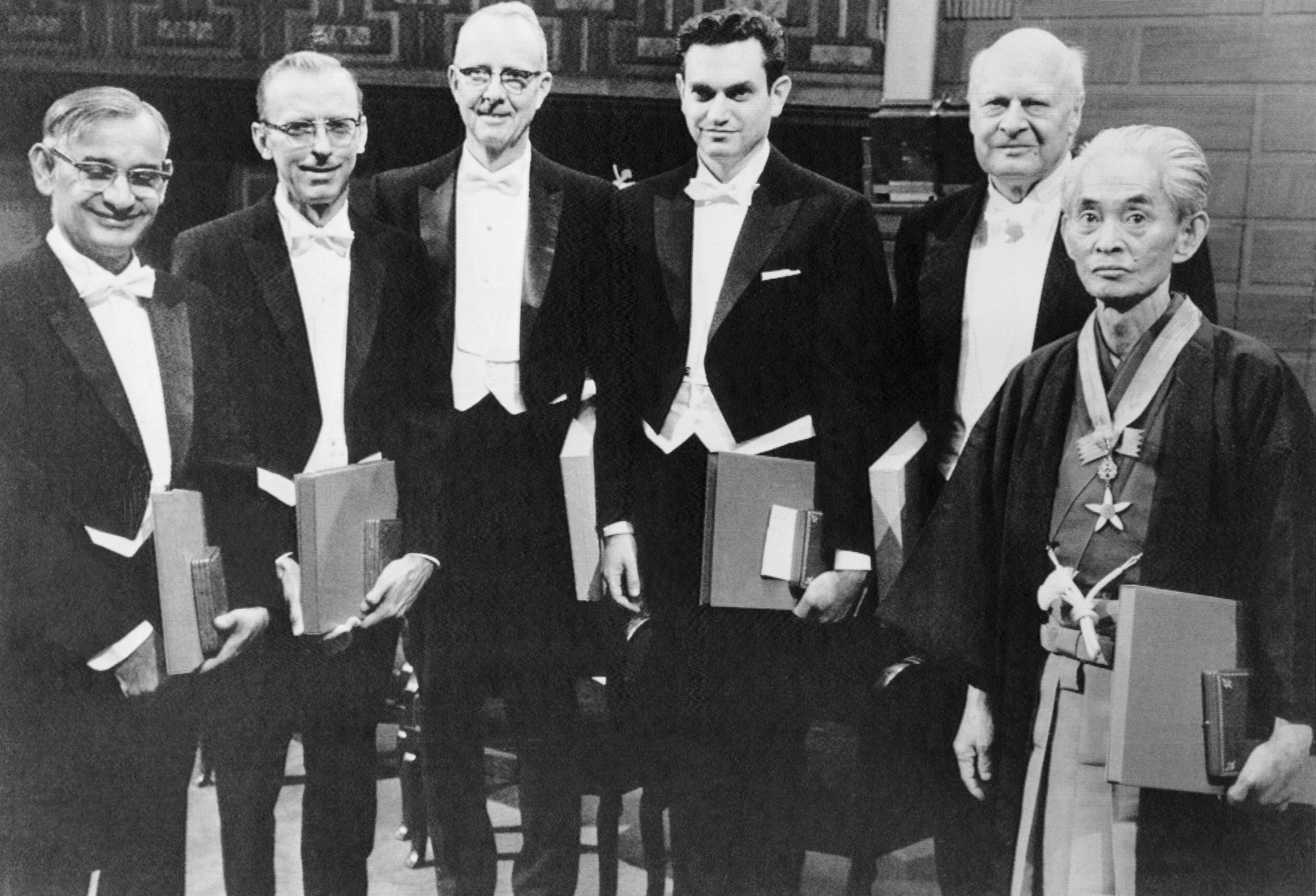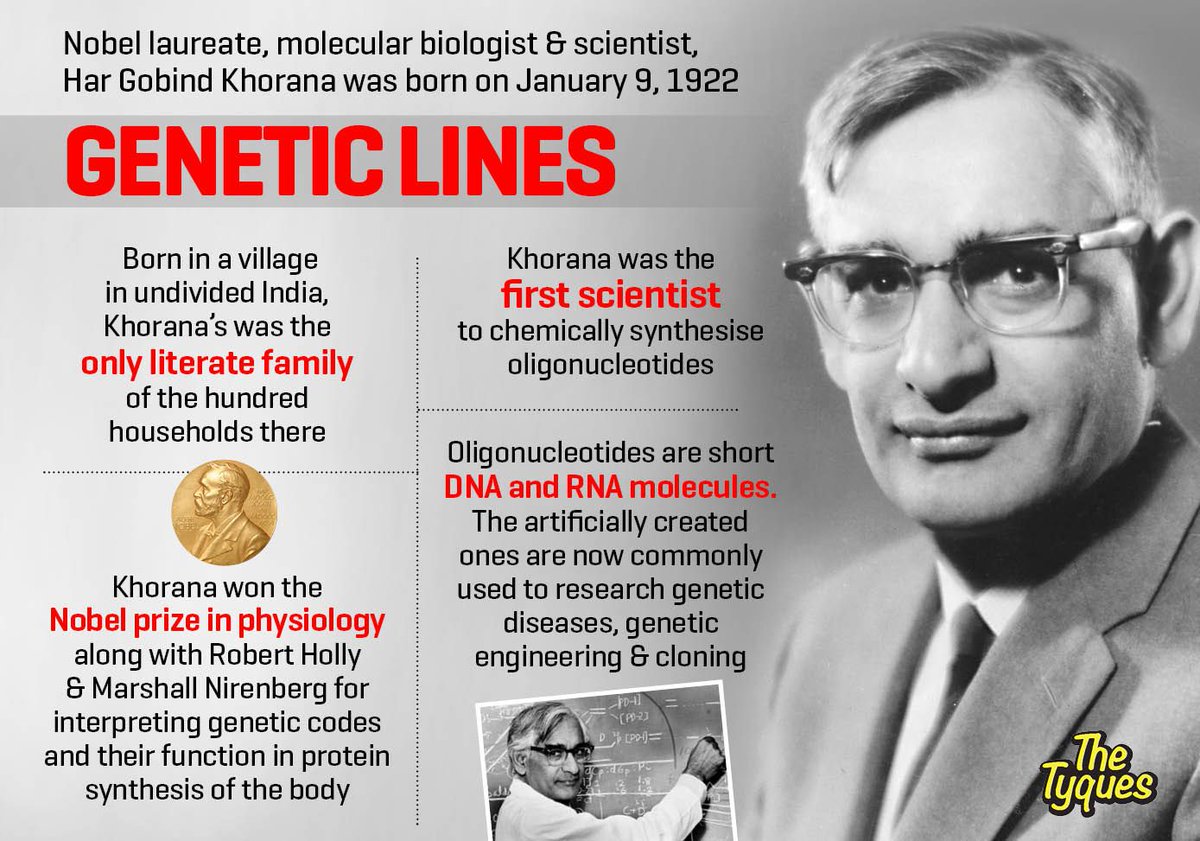**
Dr Khorana: 'A loving father, a caring mentor'
Last updated on: November 28, 2011 21:44 IST
Image: Dr Har Gobind Khorana (left) with his eldest daughter Julia Elizabeth and longtime colleague and friend Dr Uttam RajBhandary
Suman Guha MozumderNobel laureate Dr Har Gobind Khorana, who passed into the ages on November 9, took pride in mentoring younger scientists. At the same time, he ensured that his work didn't sideline his family life, Suman Guha Mozumder reports.
This is the third of the series paying tribute to the Nobel laureate.
Part I: Dr Khorana, Nobel laureate and one of science's immortals
Part II: Dr Khorana: 'Considerate, most remarkable man'
For Julia Elizabeth, the eldest of Nobel laureate Dr Har Gobind Khorana's three children, her father was an extremely loving person who would find time to spend with his children despite his enormous workload and busy schedule.

Dr Khorana had three children: Julia Elizabeth, Emily Anne (who died in 1979), and Dave Roy.
"He clearly was a very loving father; at home all of us would have dinner together and we would talk about various things," a still shocked Julia, 58, told rediff.com days after her father passed away.
"My father was a very curious person, curious about everything around him -- students, colleagues, friends, nature and what not -- and that curiosity remained with him till the very end."
Dr Khorana: 'A loving father, a caring mentor'
Last updated on: November 28, 2011 21:44 IST
Image: Dr Har Gobind Khorana (left) with his eldest daughter Julia Elizabeth and longtime colleague and friend Dr Uttam RajBhandary
Suman Guha MozumderNobel laureate Dr Har Gobind Khorana, who passed into the ages on November 9, took pride in mentoring younger scientists. At the same time, he ensured that his work didn't sideline his family life, Suman Guha Mozumder reports.
This is the third of the series paying tribute to the Nobel laureate.
Part I: Dr Khorana, Nobel laureate and one of science's immortals
Part II: Dr Khorana: 'Considerate, most remarkable man'
For Julia Elizabeth, the eldest of Nobel laureate Dr Har Gobind Khorana's three children, her father was an extremely loving person who would find time to spend with his children despite his enormous workload and busy schedule.

Dr Khorana had three children: Julia Elizabeth, Emily Anne (who died in 1979), and Dave Roy.
"He clearly was a very loving father; at home all of us would have dinner together and we would talk about various things," a still shocked Julia, 58, told rediff.com days after her father passed away.
"My father was a very curious person, curious about everything around him -- students, colleagues, friends, nature and what not -- and that curiosity remained with him till the very end."
Research[edit]
Ribonucleic acid (RNA) with two repeating units (UCUCUCU → UCU CUC UCU) produced two alternating amino acids. This, combined with the Nirenberg and Leder experiment, showed that UCU genetically codes for serine and CUC codes for leucine. RNAs with three repeating units (UACUACUA → UAC UAC UAC, or ACU ACU ACU, or CUA CUA CUA) produced three different strings of amino acids. RNAs with four repeating units including UAG, UAA, or UGA, produced only dipeptides and tripeptides thus revealing that UAG, UAA, and UGA are stop codons.[27]
Their Nobel lecture was delivered on 12 December 1968.[27] Khorana was the first scientist to chemically synthesize oligonucleotides.[28] This achievement, in the 1970s, was also the world's first synthetic gene; in later years, the process has become widespread.[25] Subsequent scientists referred to his research while advancing genome editing with the CRISPR/Cas9 system.[24]
Subsequent research[edit]
After years of work, he was the first in the world to complete the total synthesis of a functional gene outside a living organism in 1972.[13] He did this by extending the above to long DNA polymers using non-aqueous chemistry and assembled these into the first synthetic gene, using polymerase and ligase enzymes that link pieces of DNA together,[28] as well as methods that anticipated the invention of polymerase chain reaction (PCR).[29] These custom-designed pieces of artificial genes are widely used in biology labs for sequencing, cloning and engineering new plants and animals, and are integral to the expanding use of DNA analysis to understand gene-based human disease as well as human evolution. Khorana's invention(s) have become automated and commercialized so that anyone now can order a synthetic oligonucleotide or a gene from any of a number of companies. One merely needs to send the genetic sequence to one of the companies to receive an oligonucleotide with the desired sequence.
After the middle of the 1970s, his lab studied the biochemistry of bacteriorhodopsin, a membrane protein that converts light energy into chemical energy by creating a proton gradient.[30] Later, his lab went on to study the structurally related visual pigment known as rhodopsin.[31]
A summary of his work was provided by a former colleague at the University of Wisconsin: "Khorana was an early practitioner, and perhaps a founding father, of the field of chemical biology. He brought the power of chemical synthesis to bear on deciphering the genetic code, relying on different combinations of trinucleotides."[15][4]
Khorana died on 9 November 2011, in Concord, Massachusetts, at the age of 89. His wife, Esther, and daughter, Emily Anne, had died earlier,[15] but Khorana was survived by his other two children.[10] Julia Elizabeth later wrote about her father's work as a professor: "Even while doing all this research, he was always really interested in education, in students and young people."[12]





Har Gobind Khorana was married in 1952 to Esther Elizabeth Sibler, who is of Swiss origin. Esther brought a consistent sense of purpose into his life at a time when, after six years' absence from the country of his birth, Khorana felt out of place everywhere and at home nowhere.


Har Gobind Khorana married Esther Elizabeth Sibler in 1952. They had met in Switzerland and had three children, Julia Elizabeth, Emily Anne, and Dave Roy.












